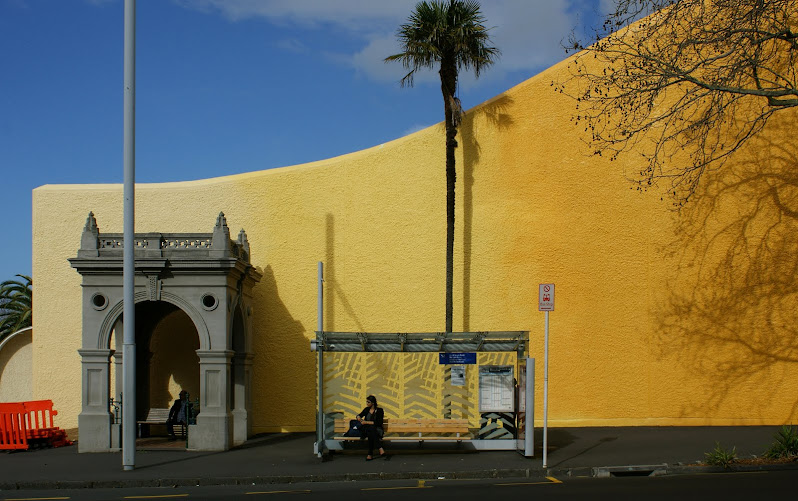Remember the hurrah in late 2009, over the successful launch of a small rocket into space from Great Mercury Island off the Coromandel Coast?
At the time, the launch of Atea-1 was heralded as New Zealand's first step into space,but new information has put that claim very much on the back burner. And yet the evidence has![]()
been in full view for years...
After WWII, USA was very keen to advance its knowledge of rocket propulsion, well aware that its Soviet rival was also intent on gaining a foothold on the launch pad. It smuggled a number of top German rocket scientists to USA, to continue their work in secret. One of them was Wernher von Braun, described as the greatest rocket scientist in history. He developed the Saturn V booster rocket that helped land men on the Moon in 1969.
Between 1950-1956, von Braun developed the Redstone rocket for the US's first nuclear ballistic missiles. Following the launch of the 50th Redstone rocket from Johnston Atoll in the South Pacific in July 1958, von Braun disappeared for two years...reappearing in July 1960 to become NASA's first Director.
Recently declassified documents show that between 1958-1960, von Braun was actually working here in NZ. Part of his brief was to survey NZ to find the best site for an observatory (for future space flight observations). This led to the establishment of Mt.John Observatory in Tekapo, which officially opened in 1965.
![]() But his main focus was the development of thruster rockets for steering future lunar landing craft...and this was done in the northern Tararua Ranges behind Palmerston North! That 2-year period saw the launch of no less than 13 rockets - all under top secrecy. The team lived in temporary barracks at a site deep in the bush, and was shuttled out to Linton Army Camp once a week at night under armed guard. The team's success was a major
But his main focus was the development of thruster rockets for steering future lunar landing craft...and this was done in the northern Tararua Ranges behind Palmerston North! That 2-year period saw the launch of no less than 13 rockets - all under top secrecy. The team lived in temporary barracks at a site deep in the bush, and was shuttled out to Linton Army Camp once a week at night under armed guard. The team's success was a major![]() factor in the moon landings.
factor in the moon landings.
Later in the 1960s, residents of Tiakitahuna on the Manawatu Plains were looking for a symbol to mark the area's centennial. One of von Braun's unused rockets had been discovered by a local hunter in the bush compound. His story (quickly suppressed) linked in with tales of unexplained bright lights and, as this was the age of the Space Race, a rocket symbol was chosen.
To quell the rumours and stop searches for the real rocket, army engineers made the Tiakitahuna Rocket out of 44-gallon oil drums welded together: it was erected in the late 1960s. The centenary years were painted at the top while the district name was painted down the body.
The rocket became a familiar landmark on the southern approach to Palmerston North City. Yet few outside the military and the govt ever knew it also marked NZ's first steps into space in the late 1950s!
At the time, the launch of Atea-1 was heralded as New Zealand's first step into space,but new information has put that claim very much on the back burner. And yet the evidence has
been in full view for years...
After WWII, USA was very keen to advance its knowledge of rocket propulsion, well aware that its Soviet rival was also intent on gaining a foothold on the launch pad. It smuggled a number of top German rocket scientists to USA, to continue their work in secret. One of them was Wernher von Braun, described as the greatest rocket scientist in history. He developed the Saturn V booster rocket that helped land men on the Moon in 1969.
Between 1950-1956, von Braun developed the Redstone rocket for the US's first nuclear ballistic missiles. Following the launch of the 50th Redstone rocket from Johnston Atoll in the South Pacific in July 1958, von Braun disappeared for two years...reappearing in July 1960 to become NASA's first Director.
Recently declassified documents show that between 1958-1960, von Braun was actually working here in NZ. Part of his brief was to survey NZ to find the best site for an observatory (for future space flight observations). This led to the establishment of Mt.John Observatory in Tekapo, which officially opened in 1965.
Later in the 1960s, residents of Tiakitahuna on the Manawatu Plains were looking for a symbol to mark the area's centennial. One of von Braun's unused rockets had been discovered by a local hunter in the bush compound. His story (quickly suppressed) linked in with tales of unexplained bright lights and, as this was the age of the Space Race, a rocket symbol was chosen.
To quell the rumours and stop searches for the real rocket, army engineers made the Tiakitahuna Rocket out of 44-gallon oil drums welded together: it was erected in the late 1960s. The centenary years were painted at the top while the district name was painted down the body.
The rocket became a familiar landmark on the southern approach to Palmerston North City. Yet few outside the military and the govt ever knew it also marked NZ's first steps into space in the late 1950s!




1 comment:
Interesting you say 1960's but my dad died in 1959 and the rocket was there then -I am pretty sure.
Post a Comment